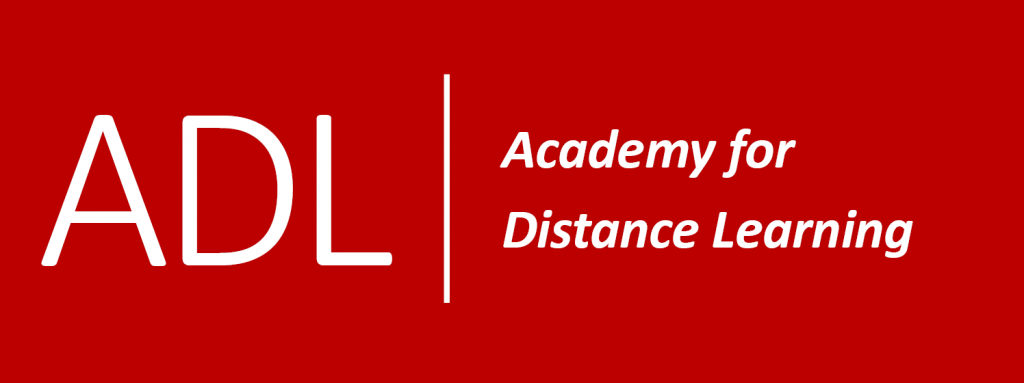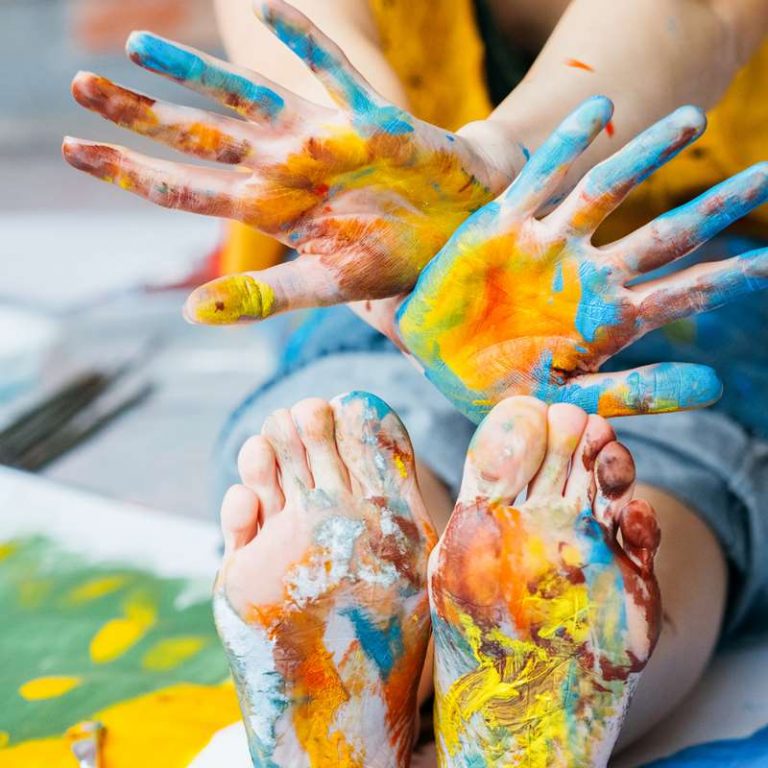Call us: +44 (0)1227 789 649 - Monday to Friday 9am to 5pm
Creative Therapies
Creative Therapies 100 hours Certificate Course
Contact us
PayPal Pay Later
Pay in 3 interest-free payments
-
Choose PayPal at checkout to pay later with Pay in 3.
-
Complete your purchase with the first payment today.
-
Remaining payments are taken automatically.
Pay in 3 is a form of credit, so carefully consider whether the purchase is affordable and how you will make the repayments. Be aware of the possible impact of using Pay in 3 and of missing payments, including making other borrowing more difficult or more expensive. Pay in 3 eligibility is subject to status and approval. 18+ UK residents only. Available for purchases of £30 to £2,000. Terms and conditions apply. PayPal Pay in 3 is a trading name of PayPal (Europe) S.à r.l. et Cie, S.C.A. 22-24 Boulevard Royal L-2449, Luxembourg.
Learn About Creative Therapies
Learn Creative Therapies Online
Learn and develop an understanding of: art therapy, music therapy, singing therapy, drama therapy, craft therapy, writing, psychotherapeutic writing, and reminiscence learning.
These creative activities help individuals who may have mental health issues caused by illness, injury or circumstances. An understanding of how these creative therapies work can also go along way in assisting family members when providing support.
Creative therapies help and assist in maintaining and improving overall mental health, together with the development of physical skills and increased mobility.
For example, knitting is an excellent activity for those with osteoarthritis as it maintains flexibility in the hands.
Creative therapies are an excellent pathway to recover from: injury or illness, improvements in health and well-being and wide-ranging benefits for physical and psychological health.
Creative therapies are a form of practices that are creative and expressive in nature and aid clients to find various ways to express themselves, that go beyond what words or conventional therapies, ie counselling or psychotherapy.
Creative therapies are limitless as the human imagination.
Course Information
Other Categories
Lessons
Lessons Structure: Creative Therapies
There are 8 lessons:
1. Scope and Nature of Creative Therapy and Counselling Skills I
- What are Creative Therapies?
- Who can benefit from participating in Creative therapy?
- Caution should be taken with some Clients
- Benefits
- Scientific evidence
- Preparing for creative therapies
- Active Listening
- Giving instructions
- Different learning styles
- Options for response
- Improving creativity
- Health and Safety
- Insurance
- Selling your Craft
- After Creative Therapy
2. Art Therapy and Counselling Skills II
- Counselling Skills – SOLER
- What is Art therapy?
- What Clients Benefit from Art Therapy?
- Scientific Evidence
- Art Therapy Techniques
3. Crafts Therapy Part 1 – Fibre and Paper Crafts
- What is Craft Therapy?
- Scientific Evidence and Historical Anecdotes
- Therapeutic Benefits
- Crafting Examples
- Confidentiality and Data Protection
4. Crafts Therapy Part 2 – Model Making and Building Crafts
- Various Forms of Crafting
- Skills required in Model Making
- Examples of Building Crafts and Model Making activities
- Benefits of Model Making and Building Crafts
- Risks
- Working with Individuals
- Creativity and individual – finding their Creativity
- Exploring, Using technology and Cultivate Expertise
- The Reward
5. Singing Therapy and Music Therapy
- What is Singing Therapy
- Therapeutic Benefits and Scientific Evidence
- What is Music Therapy?
- Music Therapy Techniques and Methods
- Active Music Therapy
- receptive Music Therapy
- How does Music Therapy Work?
- Silence
- Dementia and Singing and Music Therapy
- Working with Groups: Upset, Organising Sessions and Planning
6. Psychotherapeutic Writing
- What is Writing Therapy?
- Therapeutic Benefits: self Knowledge, Balancing Emotions, Improves Discipline, Difficulties
- Examples of Writing Therapy: How it works and examples
- Examples of Psychotherapeutic Exercise and Writing
- Write a Letter, Word Walls, Being Positive
7. Psychodrama Therapy
- Understanding how psychodrama and dance movement can be be applied to different people
- Non-Verbal Communication
- What is Body Language
- Classification of Non-Verbal Communication: Kinesics, Haptics, Proxemics, Occulesics
- Psychodrama and Drama Therapy
- What is Drama Therapy
- Aims of Drama Therapy
- Working with Different Groups: schools, educational settings, rehabilitation settings, prisons, mental health clinics, community groups
- Therapeutic Benefits and Scientific Evidence
- How it Works: Projective Play, Acting Out, Reunion, Puppetry
- Dance and Movement Therapy
- Scientific Research on DMT
- How DMT Sessions Work
- DMT and Regulating Emotions
- Psychodrama and Sessions
- Use of Psychodrama
- Psychodrama and Children
8. Reminiscence Therapy
- What is Reminiscence Therapy?
- Neurocognitive Deficits: Delirium
- Neurocognitive Disorders (NCD)
- How does Reminiscence Therapy Work
- Therapeutic Benefits and Scientific Evidence
- Reminiscence Work Tips
- Reminiscence Work and Other therapies
- Creative Therapy
Please Note: Each lesson culminates in an assignment submitted to the academy and marked by your tutor and returned with relevant suggestions, comments, and extra reading if required.
Learning Goals
BENEFITS
However, many people do benefit from creative therapies. After creative therapy, we would typically expect
- increased awareness
- a general improvement in feelings
- emotional release. Creating something can help the person to express their emotions in a healthy way, letting out their feelings and fears. Complex emotions may not always be expressed in words. Sadness and anger can be hard to express in worlds, so creating something, such as a painting, can help express these emotions. increased energy
- the release of suppressed emotions
- the resolution of internal conflict(s)
- greater acceptance of self. Creating something can leave the person with a feeling of self-accomplishment, of achieving something, which can help them to appreciate themselves and also improve their confidence.
- decreased agitation
- health benefits, such as reduced blood pressure as a result of decreased stress and improved coping skills
- self-discovery – creating something can help a person to recognise and acknowledge their subconscious feelings
- stress relief. In the modern world, many of us experience stress. When a person is also fighting anxiety, emotional trauma, depression and other mental and physical conditions, there can be even more stress. Creative therapies can help the person to relax their mind and body and reduce stress.
Creative therapies tend to be offered in conjunction with other forms of therapy when people are suffering from extreme difficulties, such as abuse, mental health conditions and so on, so the creative therapist should work in conjunction with other involved professionals.
Practical (Set Tasks)
Examinations
Program Summary
More Information
PREPARING FOR CREATIVE THERAPIES
Some preparation is required, depending on the type of therapy that is carried out. For example, with art therapy, drawing, painting or modelling materials may be required. Psychotherapeutic writing will require pens and paper or computers. And so on.
The location for the creative therapy will depend on the client and the therapist. Some creative therapies are offered as part of clinical treatment, within a hospital or in an outpatient clinic. Some therapists offer private treatment, whilst others may work within community organisations, outreach services and charities. Creative therapy may be the sole service offered or might be one service among many.
Counselling skills
When working with creative therapies, the client can often experience strong emotion. People can become upset or annoyed and so on. Expressing these emotions is part of the purpose of creative therapies, so these feelings should not be ignored or encouraged to stop.
If a person is particularly upset, they may need additional support from a counsellor, but we can also listen to what the person has to say. If you are not a counsellor, we can make use of counselling skills. Let’s briefly look at some useful counselling skills here.
Active listening
Active listening involves paying attention to what the individual is saying. Listen to the words they use, their tone of voice, the language used and their body language. This can give us real clues to what the person is thinking about, in a way that they may not be able to express in words. How often are you sitting talking to someone else and really thinking about something else? That you are hungry or have to do a particular task or thinking about what you would like to say next? With active listening, we really have to pay attention.
To actively listen –
- Maintain eye contact (within reason) to show that you are really interested in what the client has to say. This will also encourage the client to speak more freely. (However, since some cultures discourage sustained eye contact, take your cue from the client. If he/she makes eye contact, so can you; but if the client continually averts his/her eyes, you might be wiser to do the same).
- Be quiet and listen. Do not confuse listening (which is one set of actions) with giving advice or suggestions (another set of actions). Your listening task is to encourage the client to speak.
- Try to work out the main message. Ask yourself, “What is the client feeling?” and “What facts do I need to confirm that I have understood? You can find out by asking short, open questions, such as “How did you feel when that happened?” or “What is the main thing that you dislike about that?”
- Check that you understand what the client is actually trying to communicate. You can do this by clarification and paraphrasing. This also reinforces to the client that you are understanding what they are saying and they feel more ‘heard’ and understood:
- Clarification means finding out exactly what the other person means. You can do this with an open question like, “Can you explain what you mean by ‘fear of failure’ so that I understand exactly what you’re saying?”
- Paraphrasing means checking that you have understood something by re-stating it in your own words. For example, you might ask, “So what you are saying is that you feel that everyone is dumping responsibility for managing the family on you. Is that correct?” or “Can I just check that I have understood you? I think you are saying that…Do I have an accurate picture?”
- Accept the person’s feelings without judgement or opinion.
- Remain calm, unemotional and empathetic. Your role is to be receptive, to try to understand the client and support him/her through change and growth, not to judge. Empathy is the quality of showing care without becoming involved.
- Summarise what you think the client really wants and needs, and ensure that the client agrees with you that these are his or her main needs. This may require considerable discussion…
Assessment
Assessment is based on a combination of completing all assignments and sitting for a final short one and a half hour exam, in your own location.
If you don’t cope well with exams then you may elect to undertake a project instead. This is a popular option.
In addition, most modules have a Set Task at the end of each lesson placed before the assignment. This is an opportunity to undertake practical work to help you acquire knowledge and skills and practical experience. This ADL feature is an added bonus not found at most online schools. Set Tasks are not required for assessment.
Some courses also have optional Self-Tests which are available on our online learning platform. These are not available by correspondence or by USB, and do not form part of your overall grade.
How our courses work
- Choose Your Learning Method
You choose how you would like to receive your course material, i.e., Online, USB or Correspondence. The choice is yours. You may also work on online or offline. - Tutor Allocation
Every student is assigned their own dedicated tutor who is an expert in their subject area. They provide as much or as little individual contact as you require. You can contact your tutor whenever you need – your hours are not limited. - Feedback and Assignments
Tutor Feedback is an essential component in helping you understand the subject matter. Tutor feedback is given in the form of notes written on the assignment. We encourage you to contact your Tutor where help with clarification and understanding of course material may be required.
Your assignments are located at the end of each lesson. You submit them for marking whenever you are ready. There is no time limit. - Set Tasks and Self-Tests
Most modules have a Set Task at the end of each lesson before for the assignment. This is where you get the opportunity to undertake practical work to help you acquire knowledge, skills and practical experience. Many modules also have short Self-Tests. - Exams
Once all assignments have been completed you may then elect to sit for a one and half hour exam in your own location. If you prefer not to take the exam you do have the option to undertake a project instead.
Once the exam or project part of the course is completed, your Certificate is then processed. Please allow approximately 4 weeks for this. - Design Your Own Qualification
ADL offers students the flexibility to self-design their own qualification – bundling together a combination of 100-hour modules into a qualification higher than a certificate.
FAQ
FREQUENTLY ASKED QUESTIONS
Here is a list of the most often asked FAQ’s.
General
Q. Why should I enrol with the Academy for Distance Learning?
A. Here at ADL, our students are our priority – we treat everyone as a unique individual.
Q. Do I need to buy text books?
A. No, as each module has been written by highly qualified industry professionals. The content of the material is presented in such a way that text books are not required. However, if you require additional reading your tutor will be able to supply a list.
Q. What happens if I have to stop studying for a while? (eg. become sick, go on holidays, have a baby, move house, etc)
A. It’s OK to take a break and start up your study at a later point in time. Just let us know.
Q. Is there an age limit?
A. There is no maximum age limit. We do however, have a minimum age limit of 18 years. Below that age parental consent would be required.
Q. Are your courses up-to date?
A. Our courses are revised and updated on a rotation system.
Q. Do you have a Cancellation policy?
A. Yes. We have a cancellation policy that is fair and equitable. For further details please click here.
Q. Will I have any opportunity to engage with other students?
A. We have a Student Community group based on facebook! If you don’t have a facebook account already, you could make one just for talking with fellow students on the group.
Enrolment
Q. When can I enrol/start?
A. You may enrol and start at any time of the year – it’s all self- paced.
Q. Can I study from anywhere in the world?
A. Our courses are available to anyone, anywhere in the world from the comfort of your own home. The course content is relevant to any country, culture or economy.
Q. How long do I have to complete the course?
A. You complete the course at any time that is convenient for you.
Q. Completing a 100 hour module – how long will it take?
A. For some students a 100 hour module will take approximately to 3- 6 months to complete. Others take less time and some even longer.
Assessment
Q. Assessment – how does it work?
A. For each 100 hour module you are assessed by assignments (at the end of each lesson) and a final one and a half hour exam (or you may elect to complete a Project, instead of sitting the exam) – the choice is yours – you sit for the exam in your own location.
Q. I don’t cope well with exams – what can I do?
A. You may elect to undertake a Project (set by your tutor) instead of sitting the exam. Projects are completed from your home and can usually take a couple of weeks to complete.
Q. If my assignment is not up to standard is there an opportunity to resubmit my work?
A. Yes –
Q. How many assignments do I need to complete for each module?
A. At the end of each lesson, there is an assignment – so if a course has say, 10 lessons, there would be 10 assignments.
Q. I am having difficulty attending workshops/industry meetings, what can be done?
A. If your course requires attendance at workshops, conferences, or industry meetings; alternative arrangements can be made in your country.
Qualifications
Q. What qualification will I receive?
A. For individual modules, you would be awarded a Certificate endorsed by TQUK (Training Qualifications, UK), providing you complete all assignments and the exam. If you just want to complete only the assignments and not sit for the exam or finish a Project, then a Letter of Achievement would be awarded. For more details on qualifications available please click here.
Q. Can I customize my diploma/higher qualification?
A. Not all educational institution’s certificates /diplomas meet everyone’s needs. The opportunity to Design Your Own Diploma at the Academy (subject to our approval) is an added bonus, not found at other colleges. You choose modules that you think will help you in achieving your goal.
Q. What do I get when I complete the course? Will I receive a transcript?
A. At the completion of all courses and providing all assignments and exam requirements have been met, you will receive your Award and a Transcript.
Tutors
Q. Our tutors – who are they?
A. We appoint Tutors and require that they must be currently active in their industry, with at least 5 years’ experience in their chosen profession.
Q. Can I contact my tutor at any time?
A. Yes – you have unlimited access to your tutor via email through our Online Classroom. You can always leave a message with ADL requesting your tutor to contact you. You decide on how much or how little contact you wish to have.
Q. Practical work – How is this done?
A. To find out more about this part of the course please visit the section on How Our Courses Work here.
Career Options
What's Included
What your tuition fees include
- All Course Material via Online, USB or Correspondence
- Assignments Marked
- Professional Tutor Feedback
- Set Tasks - Practical Exercises to help you develop skills
- Self-Tests – multiple choice questions at the end of lessons in most modules
- Unlimited Personal Tutor Support – via our student classroom
- Committed and Friendly Admin Support – vital to your success
- All ADL Exam or Project fees (exception RHS exams)
- Qualification Certificate
- Official Transcript with assignment grades
- Student Manual
Plus FREE
- Academic Writing course (optional - 10 hours only)
- Critical Thinking course (optional - 10 hours only)
- Job Seekers Careers Guide
- Study Tips on How To Study Better
- Career Counselling by ADL Staff
- CV Writing Help, Tips and Advice
There are no hidden extras
Career Opportunities
FAQ - RHS Theory Qualifications
GENERAL
If you require further details about any of the RHS industry recognised qualifications please, call one of our friendly RHS Course Advisors on +44 (0)1227 789 649 or email: [email protected]
Q: When can I Enrol/Start My RHS Course With ADL?
A: Anytime, Anywhere. There are no enrolment deadlines.
Q: I live Overseas. Can I Study From Overseas?
A: You can study any of the RHS theory qualifications overseas. All courses are offered in English. You will need to email RHS Qualifications direct to arrange sitting for your examination overseas.
Q: Is There a Time Limit for Completing an RHS Qualification?
A: At present there are no time limits. However, RHS is contemplating in the future, the introduction of course time-lines.
Q: Are There Any Entry Requirements (Pre-Requisites)?
A: The RHS Theory courses do not require prerequisites, previous experience or any knowledge of horticulture. You just need passion for all things horticulture.
Q: What Course Should I Start With First? I Am New To RHS Qualifications.
A: We highly recommend that you start with Level 2 – Principles of Garden Planning, Establishment and Maintenance.
Q: What Does ADL Course Material Include?
A: Includes Power Point Presentations, Videos and written course lessons.
RHS EXAMS
Q: When Do Exams Take Place?
A: Exams are held on fixed dates in February and June of each year. You should register as a candidate at least 3 months before these dates, so please do not leave exam registration to the last minute
Q: Where Do I Take My Exams?
A: UK: You take the exams at the RHS Wisley Centre, located between Cobham and Ripley in Surrey or at other authorised RHS centres around the UK.
Overseas: please email RHS qualifications direct for centre information.
Q: Exam Pass Marks?
A: Module – pass 50%. Commendation 70%.
Qualification: 50% pass for all modules.
Commendation awarded for all modules.
Each question carries a value of 10 marks.
Q: I’m Not Happy With My Exam Results?
A: You have the opportunity to re-sit your exam at the next opportunity.
There are no restrictions on the number of re-sits you can take. The highest mark you achieve will remain.,





